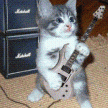Leaderboard
Popular Content
Showing content with the highest reputation on 06/30/2020 in all areas
-
If you search 'fuzz' I think you'd find a lot of good discussions covering this inside the posts, like this one;1 point
-
Specified tubes. Very good. The markings are the manufacture date, not how long they have been used. Those look okay for now, but the inner coating (getter flesh) is looking a bit dark. Might want to take it to a Line 6 authorized service center for a check-up.1 point
-
Great subject as I am a new Helix LT user and was wondering how I was going to handle this. Right now I use the Helix with a real 2x12 cabinet powered by an Orange Pedal Baby. There are no CAB blocks in any of my presets, so where do I go from there...obviously FOH/PA is out of the question for me right now. I dont have an FRFR and dont plan on getting one. I wouldn't conciser the headphone option because I figured the preset would not sound the same through a PA. So right now I am sticking with the traditional mic the speaker format. Was wondering what to expect if I added a CAB block, the same as I physically have (2x12 G12T-75) into the chain for FOH...am I crazy to think that will come close to what I am getting out of my real cabinet?1 point
-
I like to use Ownhammer, 3Sigmaudio and Celestion. To me the key seems to be the high cut and low cuts on IR's. Depending on who you source from you might need to use different levels for cuts.1 point
-
This is also absolutely true, but you definitely won't hear it in the field if you don't hear it in the studio. He said " I don’t hear much a difference but that is with studio monitors." and that was what I was speaking to.1 point
-
I"ve used some different companies as mentioned above as well, all sounded good. My latest preset iterations are using the York Audio IR's. They are more full range than lots of the other ones I've used, so you need to utilize low/high cuts properly, but the punch/character of them works best for me (right now, lol).1 point
-
I'm very happy with the OwnHammer (r)Evolution bundle. Gives you a wide range of speaker cabs with (for me) more than enough variations/ mixes. Well worth the money as far as I'm concerned. https://www.ownhammer.com/store/index.php?main_page=product_info&products_id=449 I tried some 4x12 Cabs from Celestion with V30's; these also sound very good, yet different. Need to admit that I'm currently not using them. My favourite at the moment is the OwnHammer 412 MRBW GNR M25 MMMC. Those files work great with the Plexi and JCM models in the Helix to get that classic Marshall sound, but when combined with the HiWatt or Placater models (or whatever these are called exactly) it can give very nice clean and breakup tones as well. Not yet sure if I like this cab with more modern hi gain sounds (like the RevvGen) but usually the gain provided by the Plexi and JCM models is sufficient for my needs anyhow. Hope this helps ...1 point
-
I pretty much exclusively use IRs in all of my presets, mostly due to convenience. Like yourself I play a wide range of genres and styles. I depend on three vendors which are Ownhammer, Celestion and Redwirez, each for different reasons which I'll get into in a moment. The thing is, I can get pretty much the same effect I get from IRs using stock cabinets, it just takes longer to implement due to all the twiddling around with them. Since I have well over 200 presets, that's a lot of twiddling. So it's much easier for me to simply select an IR and drop it into a preset and be done with it. It's also much easier to audition them to see what best fits the preset. Although there are some differences in the three IR vendors, I have to say that once you determine what type of setup (mic, mic combinations and mic placements) tends to work best for you, the difference between vendors is fairly minimal. I only have about 70 IRs actually loaded which I choose from. The Ownhammer IRs tend to have the widest and most exotic selection of mic setups such as the Massively Multi Mic Collections which can use up to six mics and mic positions. The Celestions tend to be very accurate and have a bit more in the way of available mics. Redwirez are useful in that they have the widest most exotic collection of speaker cabinets such as the HiWatt Fanes or Uberkabs which can easily be mixed together using their MixIR tool if you purchase their Big Box collection to create your own customized setup.1 point
-
I had this same issue with my LT. Sent it in, they 'fixed' it, new one behaved for about a week, then same issue. I couldnt get it to read 100% toe down unless my foot was resting on it. If i lifted my foot, it'd drop anywhere from 3%-12%. Made it impossible to use the expression pedal to auto engage anything at certain %'s. Ultimately ended up swapping for the full Helix and havent had a problem since.1 point
-
1 point
-
I was able to find a used Line 6 Helix floor model for $1199.99 at another local guitar store. Same price as a new LT. Right place at the right time I guess. They got it in on a trade yesterday, and didn't actually have it out yet. Its in good condition, with maybe a few light scratches, but everything works on it (from what I can tell). I think I can live with it. I'm sure I'll put a few on it myself. Only thing missing was the flash drive. Was told to try it out for 30 days, and if I didn't like it for ANY reason, they would refund %100 of my purchase price no questions asked. So, I'll give it a try and let you know what I think.1 point
-
Distortion pedals are often very idiosynchratic. Some work well with clean amps, but dont sound so good with amp distortion. With others it's the reverse. Theres also a difference as to how a distortion pedal works with other fx and of course chain position is a big factor too. In answer to your question as to whether you can match an amp plus distortion pedal tone with just the distortion from another amp, I'd suggest 'possibly. But it depends on your fussiness/sensitivity to distortion tones and playing dynamics feel. Consider too that the more distorted your tone, the more similar distortions can begin to sound. And particularly in a live band setting, a lot of the subtle nuances you might hear at home simply vanish. So I think you should just experiment and go with what your ears tell you.1 point
-
I have had to setup some patches using my DT770 headphones on occasion and I firmly agree with cruisinon2. I found it doable, but it inevitably needed some correction once I connected to a legit FOH setup. The reason being that headphones, or even studio monitors, are engineered to work so differently from common FRFR style speakers that it's really kind of impossible to match the characteristics exactly. That being said my experience in that regard is somewhat limited so I suppose it would be possible to learn how to make the corrections accurately with headphones if you had to do it all the time.1 point
-
The interface you use is entirely irrelevant, and neither contributes to, nor detracts anything from your tone...the problem is changing output devices (headphones vs a PA), and volume... specifically the effects of the Fletcher- Munson curve. Perceived loudness of different frequency ranges varies drastically with volume... it's just how our brains work. At low levels, mids dominate. When you crank it up, the highs and lows become more prominent and the mids vanish like a fart in the wind... hence the guitarists' constant search for the secret sauce that will allow us to "cut through the mix". There is absolutely nothing that can be done about this....no device that can circumvent the biology. The only workable solution is tailoring patches for both the intended output device and most importantly, volume. I've got a "live" set list, along with one for headphones, and yet another for studio monitors. Yes, it's more work up front... and yes, it's tedious and a royal pain in the a$$. But you only have to do it once. After a while, regardless of how you dialed in a particular patch, you'll get to know what tweaks you'll need to make to adapt that same patch for a different use... but even then it'll only get you "in the ballpark". You'll still have to test drive your handiwork in each scenario, and it's a safe bet that you'll still have to have to edit something. That's what rehearsals and sound checks are for, but there's no escaping the initial grunt work no matter what you do.1 point
-
For myself, it just takes time and trial/error processes to adapt to how your headphones sound/translate to my PA system. I have a powered wedge I use as well, but even that sounds different than through our full PA. Here is my process... 1) create presets using headphones. This is mostly to get the layout, blocks etc...all included and sounded decent. I know my headphones are boomy so I tend to make them a little bit boomy/bassy in the headphones as I know when i hit the next step it'll even out a bit. 2) I play through my powered wedge at a 'reasonable' house volume. Now that I'm in an apartment, I take my rig and spend about 20 min hooked up to see how my headphone attempts translate to the powered wedge, I adjust a few of my presets to get more ballpack. Then if needed, due to being short of time, will compare on my headphones the adjusted presets vs the 1.0 version and make the adjustments to match the 2.0 wedge versions so they are consistent. I know my wedge is pretty tight/clear/punchy, and if it sounds good there, usually sounds pretty decent out front with our PA. 3) during the show I soundcheck and listen to my guitar in the wedge and through the PA to compare how they respond differently. I'll use the Global EQ as a way to quickly tame any highs/lows. THen when I get my rig setup at home, I'll look at the global EQ settings and make adjustments to my presets to re-flatten the global curve. This whole process is lengthy, and a little bit back and forth, but usuallly by the 2nd show, my presets are dialed and locked in. I have good reference core tones that I can then create song specific presets with, where all I have to do is drop in the effects per song if needed.1 point
-
Just a heads-up, somebody here had the 80 ohm version of those recently and complained about poor sound quality out of the Helix (full size, not Stomp). I looked it up, and with the 12 ohm output impedance of the Helix, you ideally want headphones with an impedance of ~100ohm or greater. *If* the Stomp has the same output impedance as the full size Helix, then the same would apply to it, meaning you’d probably be better off with the 250 ohm version of the DT-990s rather than the 80 ohm. I looked all over to try to find the output impedance of the HX Stomp headphone out, but it doesn’t look like Line 6 published it anywhere, unfortunately. Also, people usually assume that higher impedance headphones will be quieter than lower impedance ones, but that is not always the case. A headphone output that has high impedance can actually be quieter with low-impedance headphones. I’ve seen several posts of people with the HX Stomp complaining they have to turn it all the way up with their 80 or 32 ohm headphones, and I suspect that might mean it has the same 12-ohm output impedance as the full size unit.1 point
This leaderboard is set to Indiana - Indianapolis/GMT-04:00



